Letter I
To The Honourable Daines BarringtonSelborne, June 30, 1769.
Dear Sir,When I was in town last month I partly engaged that I would sometime do myself the honour to write to you on the subject of natural history: and I am the more ready to fulfil my promise, because I see you are a gentleman of great candour, and one that will make allowances; especially where the writer professes to be an out-door naturalist, one that takes his observations from the subject itself, and not from the writings of others.
The following is a List of the Summer Birds of Passage which Ihave discovered in this neighbourhood, ranged somewhat in the order in which they appear.
1. Wry-neck, Raii nomina: Jynx, sive torquilla:
Usually appears about:
The middle of March: harsh note.
2. Smallest willow-wren, Regulus non cristatus:
March 23: chirps till September.
3. Swallow, Hirundo domestica:
April 13.
4. Martin, Hirundo rustica:
Ditto.
5. Sand-martin, Hirundo riparia:
Ditto.
6. Black-cap, Atricapilla:
Ditto: a sweet wild note.
7. Nightingale, Luscinia:
Beginning of April.
8. Cuckoo, Cuculus:
Middle of April.
9. Middle willow-wren, Regulus non cristatus:
Ditto, a sweet plaintive note.
10. White-throat, Ficedulae affinis:
Middle of April: mean note; sings on till September.
11. Red-start, Ruticilla:
Ditto: more agreeable song.
12. Stone curlew, OEdicnemus:
End of March; loud nocturnal whistle.
13. Turtle-dove, Turtur:
14. Grasshopper-lark, Alauda minima locustae voce:
Middle of April: a small sibilous note, till the end of July.
15. Swift, Hirundo apus:
About April 27.
16. Less reed-sparrow, Passer arundinaceus minor:
A sweet polyglot, but hurrying: it has the notes of many birds.
17. Land-rail, Ortygometra:
A loud harsh note, crex, crex.
18. Largest willow-wren, Regulus non cristatus:
Cantat voce stridula locustae; end of April, on the tops of high beeches.
19. Goat-sucker, or fern-owl, Caprimulgus:
Beginning of May; chatters by night with a singular noise.
20. Fly-catcher, Stoparola:
May 12. A very mute bird: this is the latestsummer bird of passage.
This assemblage of curious and amusing birds belongs to ten several genera of the Linnaean system; and are all of the ordo of passeres, save the jynx and cuculus, which are picae, and the charadrius (oedicnemus) and rallus (ortygometra) which are grallae.
These birds, as they stand numerically, belong to the following Linnaean genera:
1.
Jynx.
2, 6, 7, 9, 10, 11, 16, 18.
Motacilla.
3, 4, 5, 15.
Hirundo.
8.
Cuculus.
12.
1
13.
Columba.
17.
Rallus.
19.
Caprimulgus.
14.
Alauda.
20. Muscicapa.
Most soft-billed birds live on insects, and not on grain and seeds;and therefore at the end of summer they retire: but the following soft-billed birds, though insect-eaters, stay with us the year round:
Red-breast, Raii nomina: Rubecula:
Wren, Passer troglodytes:
These frequent houses; and haunt outbuildings in the winter; eat spiders.
Hedge-sparrow, Curruca:
Haunt sinks for crumbs and other sweepings.
White-wagtail, Motacilla alba:
Yellow-wagtail, Motacilla flava:
Grey-wagtail, Motacilla cinerea:
These frequent shallow rivulets near the spring heads, where they never freeze: eat the aureliae of Phryganea. The smallest birds that walk.
Wheat-ear, Oenanthe:
Some of these are to be seen with us the winter through.
Whin-chat, OEnanthe secunda:
Stone-chatter, OEnanthe tertia:
Golden-crowned wren, Regulus cristatus:
This is the smallest British bird: haunts the tops of tall trees; stays the winter through.
A List of the Winter Birds of Passage round this neighbourhood, ranged somewhat in the order in which they appear:
1. Ring-ousel, Raii nomina: Merula torquata:
This is a new migration which I have lately discovered about Michaelmas week, and again about the fourteenth of March.
2. Redwing, Turdus iliacus:
About Michaelmas.
3. Fieldfare, Turdus pilaris, Though a percher by day, roosts on the ground.
4. Royston-crew, Cornix cinerea:
Most frequent on downs.
5. Wood-cock, Scolopax:
Appears about old Michaelmas.
6. Snipe, Gallinago minor:
Some snipes constantly breed with us.
7. Jack-snipe, Gallinago minima:
8. Wood-pigeon, OEnas:
Seldom appears till late: not in such plenty as formerly.
9. Wild-swan, Cygnus ferus:
On some large waters.
10. Wild-goose, Anser ferus:
11. Wild-duck, Anas torquata minor:
12. Pochard, Anas fera fusca:
13. Widgeon, Penelope:
14. Teal, breeds with us in Wolmer-forest, Querquedula:
On our lakes and streams.
15. Gross-beak, Coccothraustes:
16. Cross-bill, Loxia:
17. Silk-tail, Garrulus bohemicus:
These are only wanderers that appear occasionally, and are not observant of any regular migration.
These birds, as they stand numerically, belong to the following Linnaean genera:
1, 2, 3.
Turdus.
4.
Corvus.
5, 6, 7.
Scolopax.
8.
Columba.
9, 10, 11, 12, 13, 14.
Anas.
15, 16.
Loxia.
17.
Ampelis.
Birds that sing in the night are but few:
Nightingale, Luscinia:
'In shadiest covert hid.'--MILTON.
Woodlark, Alauda arborea:
Suspended in mid air.
Less reed-sparrow, Passer arundinaceus minor:
Among reeds and willows.
I should now proceed to such birds as continue to sing after Midsummer, but, as they are rather numerous, they would exceed the bounds of this paper: besides, as this is now the season for remarking on that subject, I am willing to repeat my observations on some birds concerning the continuation of whose song I seem at present to have some doubt.
I am, etc.
Letter II
To The Honourable Daines BarringtonSelborne, Nov. 2, 1769.
Dear Sir,When I did myself the honour to write to you about the end of last June on the subject of natural history, I sent you a list of the summer birds of passage which I have observed in this neighbourhood; and also a list of the winter birds of passage; Imentioned besides those soft-billed birds that stay with us the winter through in the south of England, and those that are remarkable for singing in the night.














